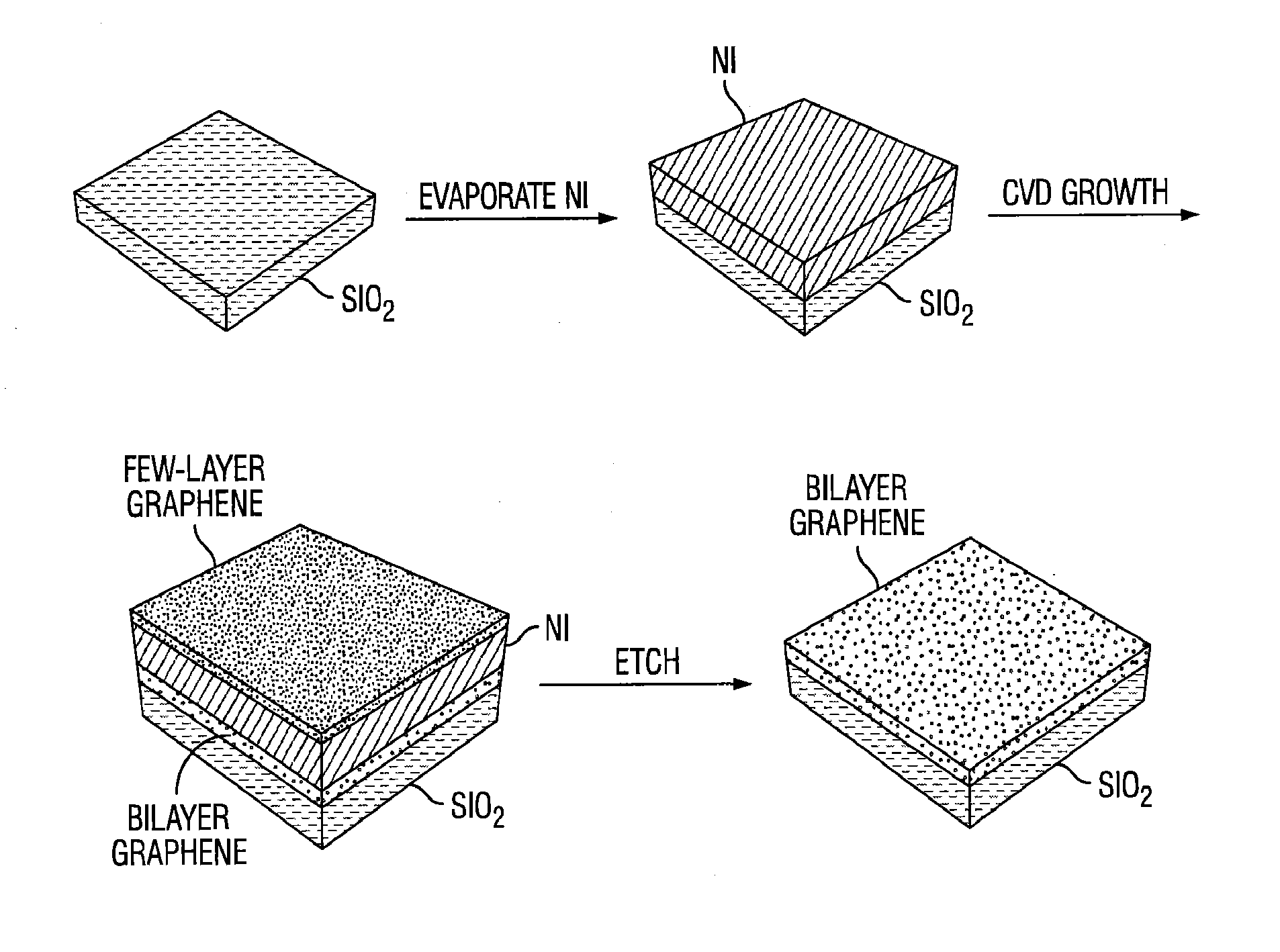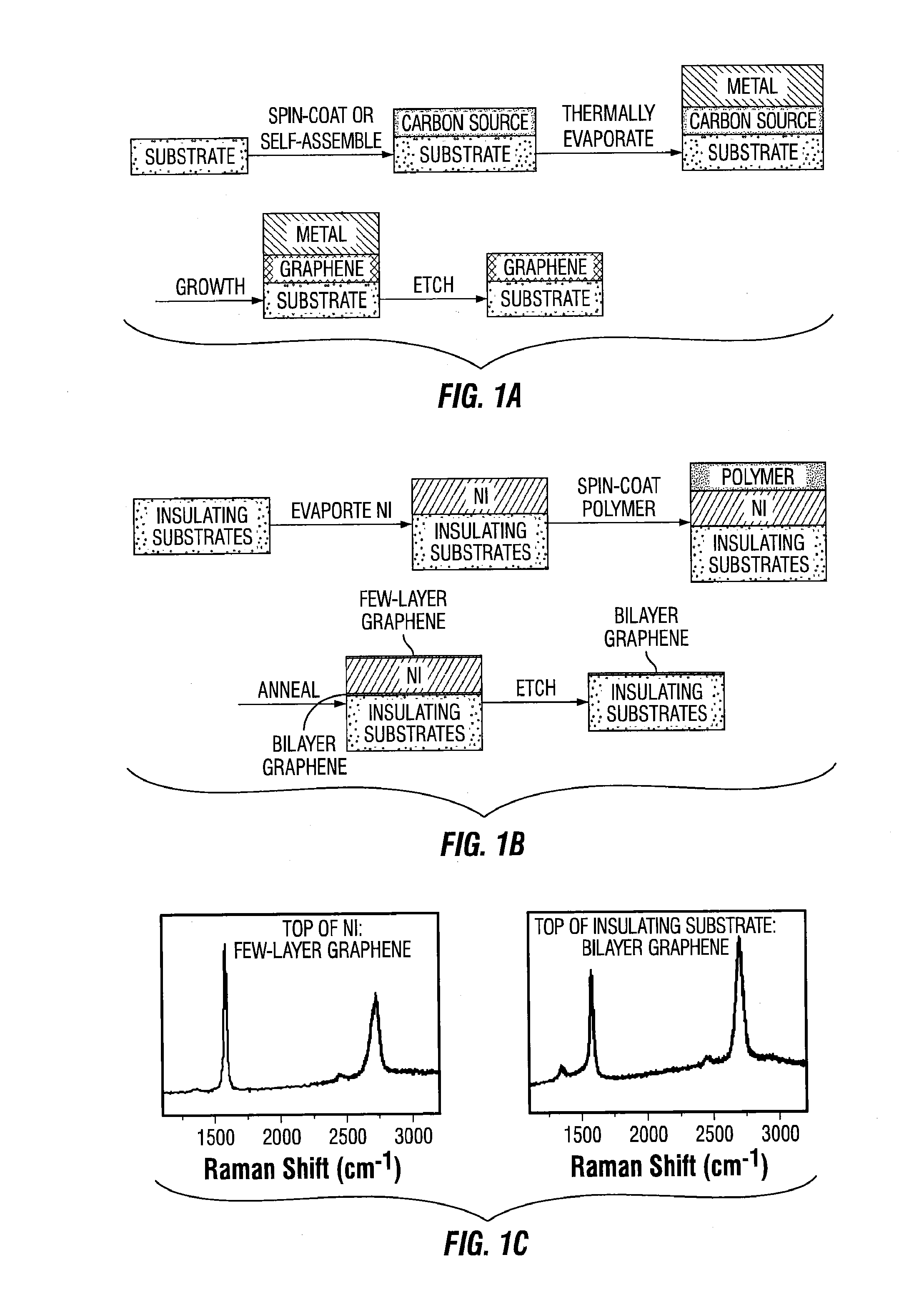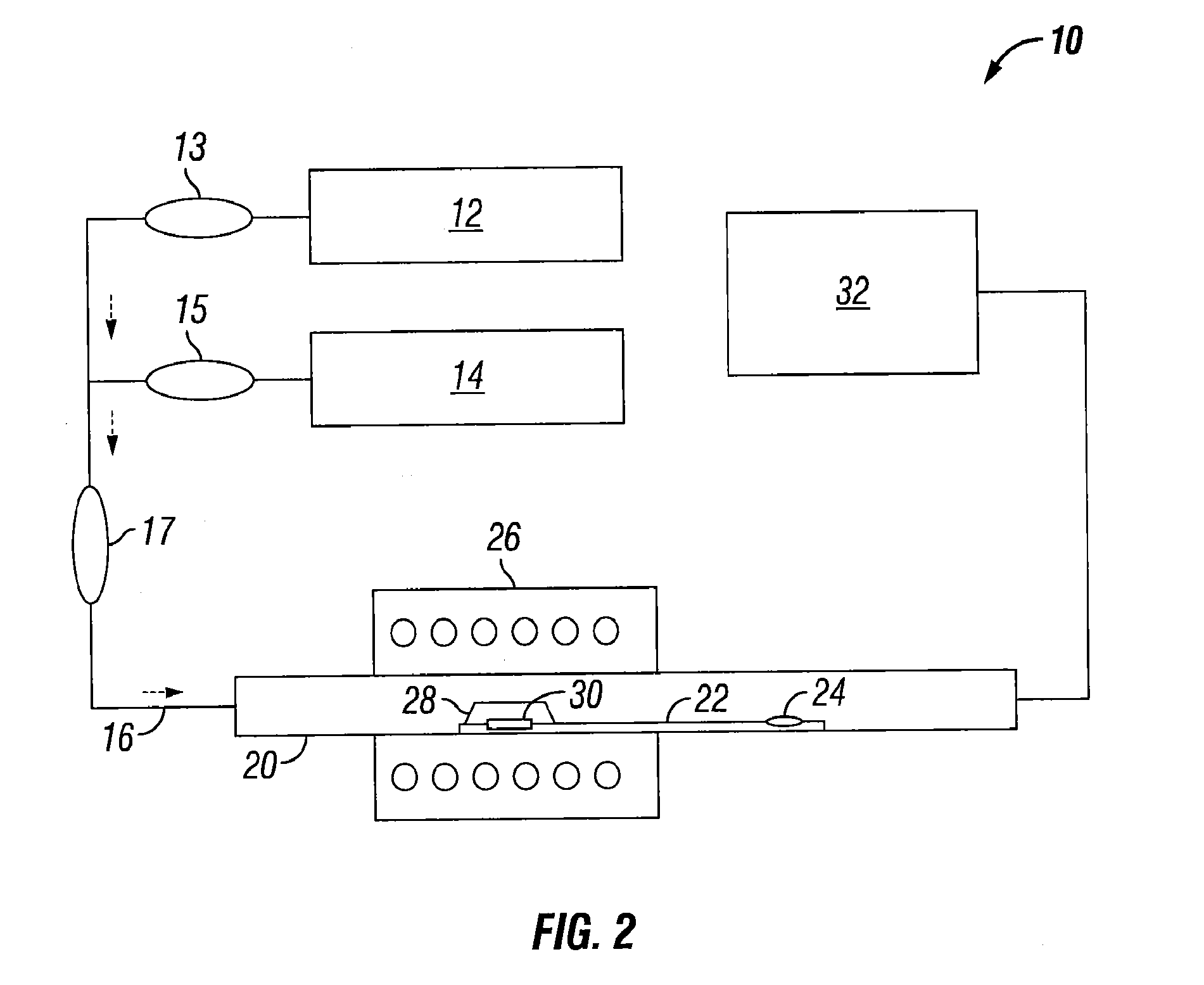Direct growth of graphene films on non-catalyst surfaces
a graphene film, non-catalyst technology, applied in the direction of physical/chemical process catalysts, metal/metal-oxide/metal-hydroxide catalysts, vacuum evaporation coating, etc., can solve the problems of various limitations of current methods for forming graphene films
- Summary
- Abstract
- Description
- Claims
- Application Information
AI Technical Summary
Benefits of technology
Problems solved by technology
Method used
Image
Examples
example 1
Direct Growth of Bilayer Graphene on Insulating Substrates
[0111]Since its first isolation in 2004, graphene has garnered enormous interest because of its promising electronic applications. Bilayer graphene is particularly interesting because it has a tunable bandgap, thereby being more attractive for many electronic and optical device embodiments. For such applications, uniform-thickness and large-size bilayer graphene films on insulating substrates are desirable. However, the present growth methods either need an additional lift-off step to transfer graphene from the metal catalyst surfaces to the insulating substrates, such as in chemical vapor deposition (CVD) and solid carbon source synthesis methods, or they have difficulty yielding uniform bilayer graphene films directly on insulating substrates, as in epitaxial growth methods from SiC.
[0112]Here, we demonstrate a general transfer-free method to directly grow large areas of uniform bilayer graphene on insulating substrates (e....
example 1.1
Methods Summary
[0134]The Ni film was deposited via an Edwards Auto 306 Thermal Evaporator. Raman spectroscopy was performed with a Renishaw RE02 Raman microscope using 514-nm laser excitation at room temperature. A 2100F field emission gun transmission electron microscope was used to take the high-resolution TEM images of graphene samples transferred onto a lacey carbon (Ted Pella) or a C-flat TEM grid (Protochips). Electrical characterizations were performed using an Agilent 4155C semiconductor parameter analyzer at room temperature at 106 Torr. XPS was performed on a PHI Quantera SXM scanning X-ray microprobe with 100 □m beam size and 45° takeoff angle. The thickness of SAMs was determined using an LSE Stokes ellipsometer with a He—Ne laser light source at a λ of 632.8 nm of an angle of incidence of 70°.
example 1.2
Cleaning of Insulating Substrates
[0135]Prior to coating the insulating substrates with the solid carbon sources, the SiO2 underwent a surface cleaning by oxygen-plasma etching for 10 min, followed by immersion in piranha solution (4:1 sulfuric acid:hydrogen peroxide) at 95° C. for 30 min. The substrates were placed in DI water and sonicated (Fisher Scientific FS110H) for more than 60 min. The SiO2 surfaces were thoroughly rinsed with DI water and were dried by a nitrogen flow. The substrates were further dried in a vacuum oven (˜100 Torr) at 80° C. for 30 min. The h-BN substrates were made by transferring CVD-grown h-BN layers to cleaned SiO2 / Si. Before spin-coating the polymer film, h-BN / SiO2 / Si substrates were annealed for 60 min at 400° C. with H2 (50 sccm) / Ar (500 sccm) and reduced pressure (˜7.0 Torr). A 500-nm-layer of Si3N4 was grown on SiO2 / Si++ substrates having a 500-nm-thick SiO2 layer using plasma-enhanced chemical vapor deposition (PECVD). Both Si3N4 and sapphire were c...
PUM
| Property | Measurement | Unit |
|---|---|---|
| temperature | aaaaa | aaaaa |
| temperature | aaaaa | aaaaa |
| thick | aaaaa | aaaaa |
Abstract
Description
Claims
Application Information
 Login to View More
Login to View More - R&D
- Intellectual Property
- Life Sciences
- Materials
- Tech Scout
- Unparalleled Data Quality
- Higher Quality Content
- 60% Fewer Hallucinations
Browse by: Latest US Patents, China's latest patents, Technical Efficacy Thesaurus, Application Domain, Technology Topic, Popular Technical Reports.
© 2025 PatSnap. All rights reserved.Legal|Privacy policy|Modern Slavery Act Transparency Statement|Sitemap|About US| Contact US: help@patsnap.com



